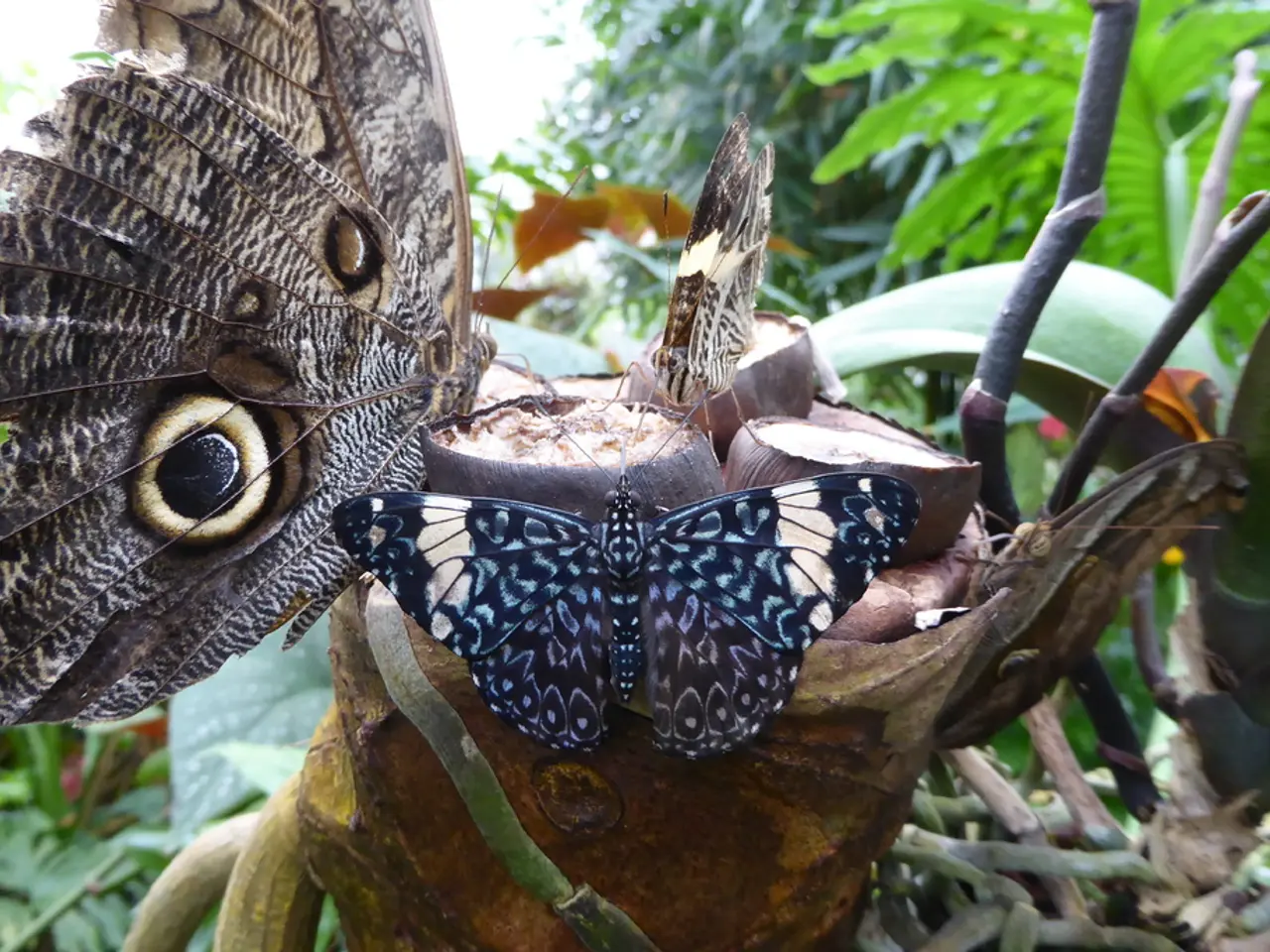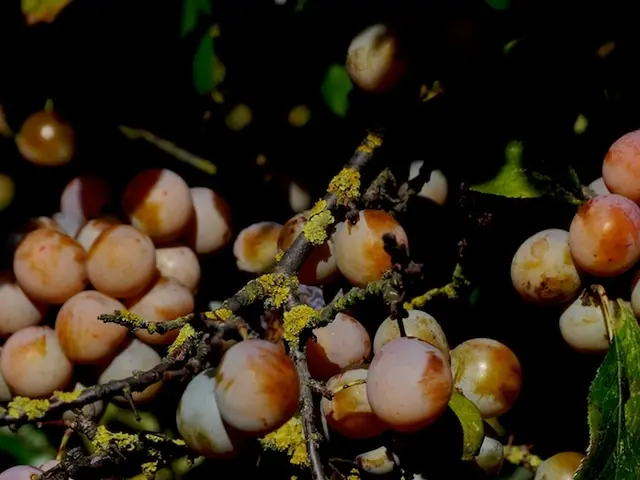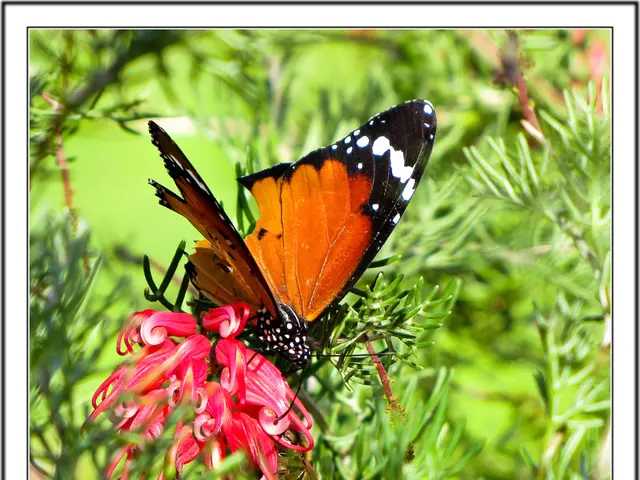Butterflies and Tropical Milkweed: Potential Risks and Solutions
In gardens across the globe, the vibrant blossoms of tropical milkweed (Asclepias curassavica) are a popular choice. However, a closer look reveals that this plant may pose significant risks to the monarch butterfly population.
Tropical milkweed, while attractive, is not a friend to the monarchs. The plant serves as a common host for the deadly protozoan parasite Ophryocystis elektroscirrha (OE), which can lead to higher infection rates among monarch caterpillars. Studies have shown that the highest OE incidence in monarchs is in southern regions where tropical milkweed grows year-round [2].
Another concern is the disruption of migration patterns. Because tropical milkweed does not die back seasonally in warm climates, unlike native milkweed species, it encourages monarchs to remain and breed year-round instead of migrating. This disrupts their natural migration cycle, increasing disease transmission and reducing population fitness [1][3].
Furthermore, female monarchs infected with OE preferentially lay eggs on tropical milkweed, which may compound the disease's impact on larvae [1]. Additionally, tropical milkweed can be more toxic than native species due to higher cardenolide concentrations influenced by temperature and other factors; this may affect caterpillar development, although some protection against parasites has been observed [1][5].
To mitigate these risks, experts recommend removing or cutting back tropical milkweed plants in the fall in regions where it does not naturally die back, and planting native milkweed species that support monarch health and migration better [3][4].
Despite its benefits as an easy-to-grow plant, the negative impacts on monarch butterflies are considerable. Many conservationists and researchers advise gardeners, particularly in the southern U.S., to avoid growing tropical milkweed and instead cultivate native milkweed species to best support monarch butterfly populations and their natural behavior.
However, in colder-winter areas where tropical milkweed dies back with the first frost, it can be safely grown. In warmer areas, it can be grown in greenhouses, but it is better to not plant it due to its negative effects on monarch butterflies.
Gardeners who wish to create a wildlife-friendly garden have other options. Native alternatives such as Zinnia (Zinnia elegans), Yarrow (Achillea millifolium), Tickseed (Coreopsis), and native milkweed species, offer a diverse array of colours and benefits for local wildlife without the risks associated with tropical milkweed.
By making informed choices about the plants we cultivate, we can help support the health and survival of the monarch butterfly population and ensure that these beautiful creatures continue to grace our gardens for generations to come.
[1] Brower, L. D., et al. (2012). Milkweed oviposition preferences of monarch butterflies (Danaus plexippus) infected with the protozoan parasite Ophryocystis elektroscirrha. Journal of Insect Behavior, 25(5), 681-686.
[2] Kunz, T. H., et al. (2003). Ophryocystis elektroscirrha: a widespread pathogen of monarch butterflies (Lepidoptera: Nymphalidae) in North America. Canadian Journal of Zoology, 81(11), 1210-1217.
[3] Pleasants, J. A., et al. (2013). Planting milkweed to support monarch butterflies: a review of the evidence. Journal of Applied Ecology, 50(4), 865-874.
[4] Sippola, S. L., et al. (2013). The impact of milkweed on monarch butterflies: a review of the evidence. Journal of Insect Conservation, 17(5), 659-667.
[5] Withers, S. G., et al. (2010). Cardenolides in milkweed leaves: variation in cardenolide concentrations in response to temperature and light. Journal of Chemical Ecology, 36(10), 1392-1404.







